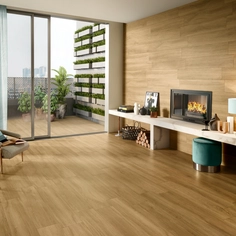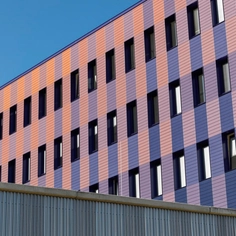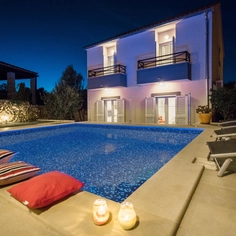Racó De L’Arnau Restaurant serves high Valencian cuisine, architect Jorge Segarra Checa created a facade restoration and indoor solutions using Grespania Coverlam Wood Cerezo. A fresh, up-to-date design was achieved in record time without the disadvantages of demolishing existing structures due to the restoration of the existing facade.
| Project | Restaurant |
| Location | Valencia, Spain |
| Studio | Jorge Segarra Checa |
| Material | Coverlam Wood Cerezo |
What is Coverlam?
For years porcelain tile has been a material that provides excellent mechanical and aesthetic benefits in a range of uses. Its small size and heavyweight, however, have limited its potential use.
Coverlam large-format porcelain tile in Wood Cerezo finish has the mechanical and aesthetic benefits of Porcelain but in a lighter, thinner format. Thanks to the introduction of lamination pressing technology, Grespania can produce a 300 x 100 cm large-format porcelain tile which may be as thin as 3.5 mm.
Industry 4.0
The term ‘Industry 4.0’ refers to the concept of the ‘smart factory’, and consists of the digitization of production processes by means of sensors and information systems making processes more efficient.
Grespania leads the way in the ceramic sector, having already implemented this plant management system in its Coverlam Factory; all its processes are automated and interconnected via the internet and can be managed remotely.
Large-Format Porcelain Tile Production
Coverlam is manufactured in pieces of up to 1200x3600 mm and is sold in various formats, created by dividing up the initial piece with an automated cutting system. The 3.5 mm thick Coverlam models are composed of a porcelain base and a 0.5 mm-thick fiberglass mesh adhered to the back. As a result, the mechanical strength of the piece is substantially improved.
Fewer Joints
The large size of these pieces means a considerable reduction in the number of joints between pieces, such that the joints represent less than 1% of the total surface area. This makes floors and walls tiled with Coverlam more attractive and hygienic for Restaurant use.
Interior Design

This restaurant highlights luminosity. An open kitchen allows customers to enjoy watching their food being produced. Thanks to its thin thickness and ease of cutting and handling it is ideal for covering structures, in this case, the countertop and air conditioning boxes.
Coverlam’s 300 x100 cm format makes it a suitable material for covering large surfaces, providing all the mechanical and aesthetic characteristics that distinguish porcelain tile.
Facade
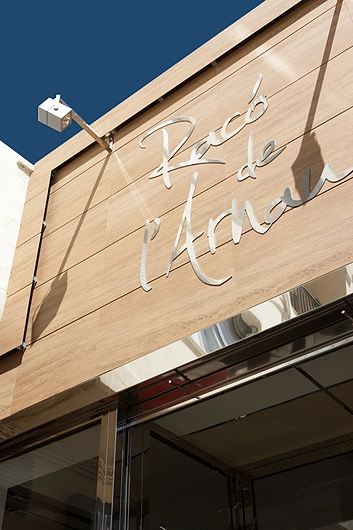
Thanks to its technical and aesthetic properties, Coverlam can provide constructive, innovative solutions to any project. When used for façades, its large formats, as well as the range of available sizes, means installations can be completed in fewer steps and makes it adaptable to any project design requirements.
Refurbishment
Coverlam can easily be placed on walls and floors, over the top of any material without the need for demolition. This eliminates the typical inconveniences associated with renovations, such as noise, dust, and debris, thus reducing working time.
Its minimal thickness and low weight facilitate storage and transportation and do not overload the existing structure. The advantages of Coverlam really stand out when it comes to renovations of establishments open to the public such as this restaurant project.
 | 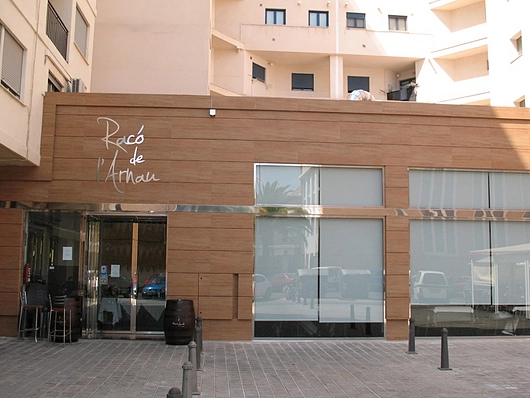 |
| Before | After |




























